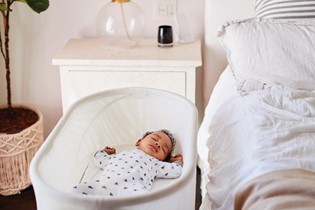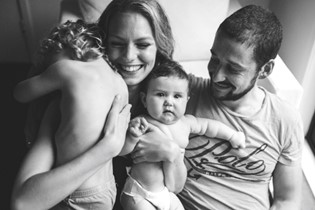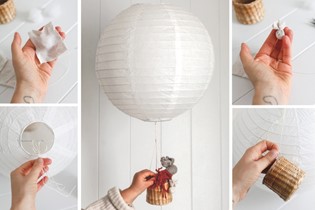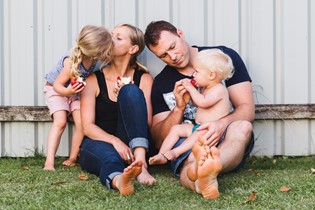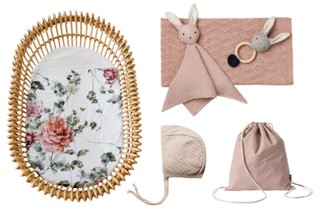Prenatal fitness: try these yoga stretches at home
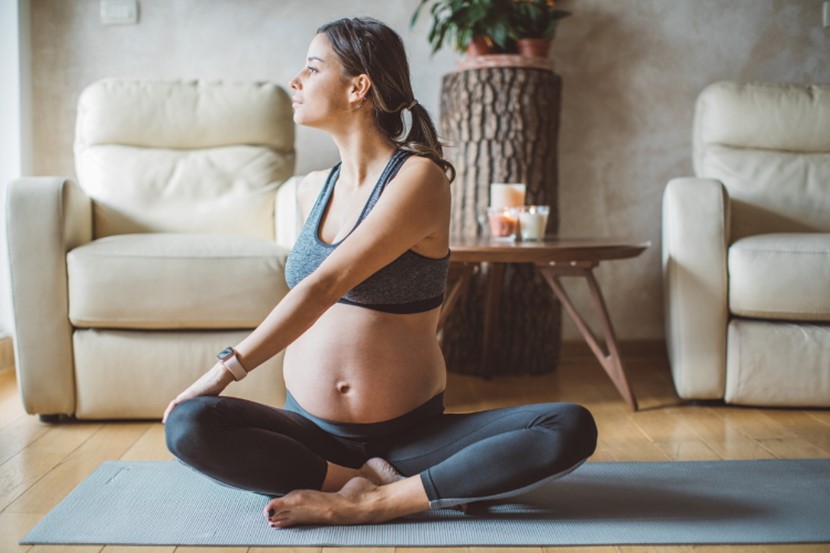
Fitness expert Renée Vincent explores the benefits of prenatal yoga, and shares some stretches for you to try at home.
At no other time will a woman’s body undergo as much change as it does during pregnancy. Not only are there physical changes, but also the emotional and psychological processes of preparing to become a parent. Many women are turning to pregnancy exercise classes to help them through this very special time.
In New Zealand, most parents-to-be attend traditional antenatal classes to help them better understand pregnancy, learn about labour and delivery, and prepare them for looking after a newborn. However, increasing numbers of women are choosing to do yoga or Pilates as well, finding that it helps them cope with the discomforts of pregnancy, and feel more prepared for the arrival of their baby. Pregnant women can experience a range of annoying and distressing symptoms, such as nausea, fatigue, lower back pain, swelling, constipation and reflux. They may also be dealing with hormone-related mood swings, and stress caused by the demands of work or financial concerns, or caused by worries associated with preparing for parenthood or the health of their baby. As pregnancy progresses, many women also become increasingly concerned about having a smooth delivery and can feel anxious about the physical challenge of birthing their baby.
The nature of our modern lifestyle means that we often ignore our body’s needs – sitting for much longer than is recommended or rushing through the day without taking a break. We’re also frequently distracted by electronic devices and there are often multiple demands made on us at any one time. However, vaginal delivery requires the mind and body to work together because you need both physical stamina and the ability to trust in your body. I decided to look further into pregnancy-adapted yoga classes. Although not all women will be interested in the spiritual aspect of traditional yoga, most are likely to benefit from taking time out to connect with their body through exercise.
|
PREGNANCY STRETCHES TO TRY AT HOME
|
MODIFIED DOWNWARD DOG Using a chair to perform the downward dog pose reduces the strain, and makes it easier to perform throughout pregnancy. Place your hands on the back of a chair. Step your feet back until your trunk and legs create a 90 degree angle and your feet are hip- width apart. Push your hands down on the chair as you move your hips back, and lengthen through your torso and shoulders, feeling a comfortable stretch through the back of your legs. Hold the pose for a few breaths. Using a chair to perform the downward dog pose reduces the strain, and makes it easier to perform throughout pregnancy. Place your hands on the back of a chair. Step your feet back until your trunk and legs create a 90 degree angle and your feet are hip- width apart. Push your hands down on the chair as you move your hips back, and lengthen through your torso and shoulders, feeling a comfortable stretch through the back of your legs. Hold the pose for a few breaths. |
 CHAIR POSE CHAIR POSEYou can use the chair to guide your position for this, but it can be done without it. Reach your arms up to your ears, shoulder width apart. With your feet just in front of the chair, and hip-width apart, sit back until your buttocks hover just above the seat. Engage your buttocks and core by pressing through your heels and gently drawing your navel toward your spine. Hold here for 10-30 seconds, then come up out of the squat by pressing down through your heels and straightening your legs. |
 MODIFIED PIGEON POSE MODIFIED PIGEON POSESit on a chair with your feet flat on the floor. Cross your right ankle onto your left thigh. Gently sit up and hinge forward at your hips slightly, allowing room for your baby in the triangle space between your legs. Make sure you are not compressing your belly. If you have pain in your back or hips, perform this pose with care, and stop if it increases your pain. Hold for 30-60 seconds and then repeat on the other side. |
CHILD'S POSE Start on all fours on the mat. With your big toes touching, your knees opened and slightly to the side, ease your hips back over your heels with your arms stretched out. Rest your forehead gently on the floor, or a on a rolled-up towel if that allows you more space. Rest here and breathe into your belly for 1-2 minutes. Start on all fours on the mat. With your big toes touching, your knees opened and slightly to the side, ease your hips back over your heels with your arms stretched out. Rest your forehead gently on the floor, or a on a rolled-up towel if that allows you more space. Rest here and breathe into your belly for 1-2 minutes. |
PREPARING FOR CHILDBIRTH
To gain further insight into the use of yoga during pregnancy, I met with Petra Tip who runs Mahina Mahai Pregnancy Yoga, Childbirth Preparation & Beyond, with studios in the Auckland suburbs of Henderson and Titirangi. Petra has been studying and teaching pregnancy and postnatal yoga for more than a decade, and has helped hundreds of women reconnect with their bodies and with the natural intuition they need during pregnancy and birth. Petra explains, “It is not only about creating flexibility and strength in the body through exercise, but also about creating flexibility in the mind through knowledge and education. These things combined will help women face the challenges of pregnancy and delivery.”

Petra regularly receives feedback from clients telling her they felt empowered when using her techniques during labour and delivery. Regardless of whether they had a vaginal birth or a Caesarean-section, Petra feels that by drawing on what they’ve learned during their classes, her clients are calmer and therefore better able to make decisions during labour. As a trained pregnancy doula, Petra also attends births and so experiences firsthand how her clients use the techniques they have learnt during their deliveries.
An increasing number of research studies are demonstrating the benefits that Petra sees on a weekly basis.¹ Practising yoga during pregnancy has been shown to improve maternal stress levels as well as the automatic function of the nervous system and even the quality of interpersonal relating. It’s also been shown to lower pain levels during labour, and even to shorten labour. Positive effects on foetal outcomes have also been recorded. As long as the exercises are low-impact and appropriately modified, there are very few adverse outcomes.
MIND-BODY CONNECTION
So what does a pregnancy yoga class involve? Yoga originated in India as a mind-body practice, but is increasingly used in the West as a health practice. Its health benefits include improving immunity, circulation, nervous system and psychological function, and increasing body strength and flexibility. Classes incorporate traditional physical postures and components, such as breathing exercises and positive affirmations.
Petra says that while her sessions involve breathing and yoga poses, they also include a lot of education and advice. She calls her classes ‘yoga with a difference’ because they incorporate guidance and teaching aimed at modifying her clients’ lifestyles, such as their ways of moving, sitting or standing, to maximise the benefits for their baby. For example, Petra encourages women to bring their posture more upright and to balance their body, rather than slouching, rounding their shoulders, or sitting in asymmetrical postures or with legs crossed. She recommends sitting on a Swiss ball or on the floor rather than on a couch to help maintain flexibility. As the sessions progress, Petra introduces specialised breathing techniques, and positive affirmations to help with delivery. Women learn how to use their breath to remain focussed and centred during painful contractions, but also to allow the pelvic floor to open.
My clients who are keen to try pregnancy yoga often want to know if it’s safe and if the energy and time is worth it. Research is limited, but there is evidence to support the beneficial effects of pregnancy yoga while reporting minimal negative effects for women. Reviewing the literature and talking to Petra has only reaffirmed in my mind that women who take a course of pregnancy yoga stand to gain a host of benefits, and will go to delivery better prepared.
30 MINUTES A DAY
There are international recommendations that pregnant women should exercise for 30 minutes on most days of the week. Research from a university in Virginia, USA, looked at how incorporating pregnancy yoga into standard antenatal classes helped women meet exercise recommendations, and it returned positive results.² I would emphasise, however, that it is important to look for a pregnancy-specific class that keeps the poses simple and low-impact, and one which is run by a teacher who specialises in this area and can add their expertise to the class.
■ OHbaby! fitness expert Renée Vincent is a mum-of-one and a physiotherapist at Total Mums in Auckland. She knows the physical demands placed on a mama’s body, and loves sharing her knowledge to help us stay at our best. Find her at totalmums.co.nz.
■ Petra Tip has assisted many births as a doula, and runs Mahina Mahai Pregnancy Yoga, Childbirth Preparation & Beyond. Find her at mahinamahai.co.nz.
FOOTNOTES: 1. See, for example, Curtis K. et al. (2012). Systematic review of yoga for pregnant women: Current status and future directions. Evidence-Based Complementary and Alternative Medicine, Article ID 715942. Or Jahdi F. et al. (2017). Yoga during pregnancy: The effects on labor pain and delivery outcomes (a randomized controlled trial). Complementary Therapies in Clinical Practice, 27, 1–4.
2. Kinser P. et al. (2019). Enhancing accessibility of physical activity during pregnancy: A pilot study on women’s experiences with integrating yoga into group prenatal care. Health Services Research and Managerial Epidemiology, 6, 1–5.

AS FEATURED IN ISSUE 47 OF OHbaby! MAGAZINE. CHECK OUT OTHER ARTICLES IN THIS ISSUE BELOW
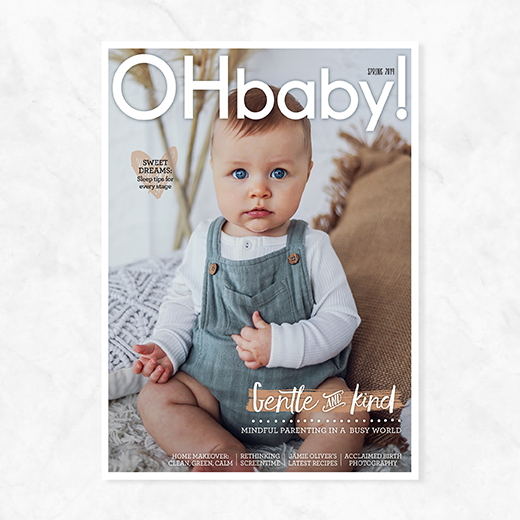

 CAT AND CAMEL
CAT AND CAMEL